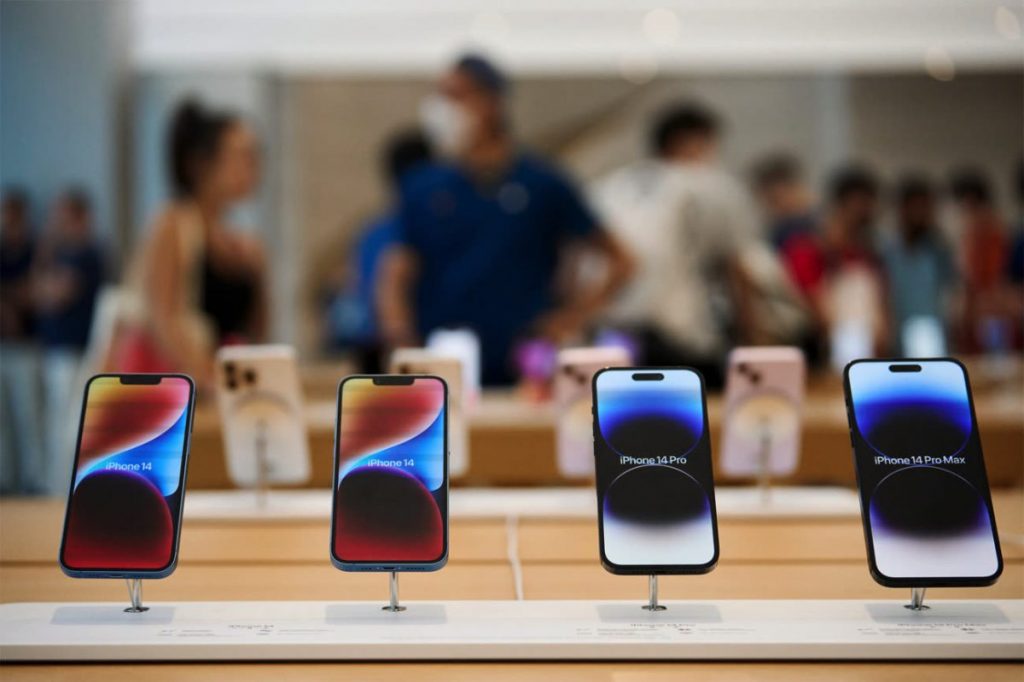The last ten years have been a turning point in the history of the smartphone. Innovative designs and cutting-edge technology have led to a rise in the average price of our smartphones, which has doubled or even tripled in just a few years.
While turning to refurbished devices has been a good way to get around the sometimes exorbitant prices of new generation smartphones, the price increase is also affecting the second hand market.
There are two reasons for this increase: the scarcity of raw materials and the economic situation.
The scarcity of raw materials and the impact of current events
Our smartphones: one product, dozens of components
Did you know that our smartphones contain over 70 different components? From the touch screen to the battery to the camera lens, there are dozens of components needed to assemble a mobile phone. Some of these components – particularly metal components – are becoming increasingly scarce and are therefore becoming more valuable on the market. If the new sector is more affected, the second-hand sector is not left out and sees the cost of reconditioning increase… and is obliged to pass this on in its prices.
Covid, transport, political conflicts: an unfavorable situation
Between 2020 and the beginning of 2022, Covid paralysed the production lines, which considerably lengthened manufacturers’ lead times, to the benefit of reconditioning, which needs fewer parts and components.
The return to ‘normal’ life has boosted the new car market, increasing the demand for raw materials which, coupled with their scarcity, have seen their value rise and their price explode.
The conflict between Ukraine and Russia has also impacted the price of key resources:
- oil, which is mainly imported from Russia, increasing the price of a barrel and therefore the price of transport;
- iron and steel – among others – of which Ukraine is a major exporter.
While smartphones are particularly affected by this price increase, many product ranges are also affected: laptops, desktop computers, tablets, etc.
Hardware vs. Service: the price of your refurbished smartphone is rising, but what about the associated services?
Price increases can be a barrier to the deployment of refurbished smartphones, leading to the reassurance of a new smartphone solution.
However, smartphone professionals in the B2B market are able to offer more affordable deals than new, including many services that are worth considering.
This highly competitive market, coupled with an unfavourable economic climate, highlights the creativity and proactivity of companies: it is then up to you to make your choice!
Stand out through services
It is not always the product that distinguishes one provider from another: it is above all the services that revolve around it.
Deployment, fleet buyback, maintenance, quality, after-sales service, warranty, etc. are all important aspects that must accompany the product. Although the number of service providers offering refurbished products is increasing, few of them have the logistical, technical or commercial capacity to provide complete (and long-term) support for large-scale or complex requests.
For support throughout the life of your smartphone fleet, choose a service provider that offers at least the following three services:
- Deployment: in the case of renewal or addition to the fleet, a controlled deployment involves numerous steps such as multi-site delivery, tracking by IMEI number, appropriate packaging, etc;
- Maintenance: a key service in the context of sustainable management of your fleet, which allows you to extend the useful life of your business mobile phones;
- Buy-back: as part of a circular economy approach, it allows you to give a second life to your fleet of smartphones or tablets and also to finance part of your future investments.
In summary, prices fluctuate and tend to increase, due to the scarcity of equipment and the increase in demand. We can therefore expect prices of smartphones to rise, regardless of the brand or model.
It is therefore essential to study the different offers on the market, leaving aside the financial criterion: what level of service do the different providers offer? How responsive are they?
In such a vague context, choose a partner who is able to anticipate: by building up a stock or through a network of service providers, they will be able to respond to your requests, regardless of the volume or the timeframe.
